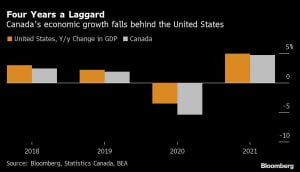Niagara to remain in grey-lockdown on February 16
On February 16th, the Government of Ontario will end the provincewide shutdown for all regions except Toronto Public Health, Peel Public Health, York Region Public Health and North Bay Parry Sound District. Twenty-seven other public health regions will be returned to the revised COVID-19 Response Framework. Niagara will remain in grey-lockdown. The revised rules for grey-lockdown mean that all retailers, including non-essential retailers, will be able to re-open on February 16 at 25% of occupancy allowed by code or the maximum number of people who can be accommodated with 2-metre spacing (whichever is smaller).
Niagara is the only public health unit to remain in grey-lockdown. With the exception of the four regions remaining in shutdown, all others have been returned to lesser stages of the Response Framework.
Niagara Medical Officer of Health warns of third wave
 In a social media thread, Dr. Mustafa Hirji, Niagara Region’s Acting Medical Officer of Health and Commissioner of Public Health, has warned of a potential third wave that could arise from a premature or overly-lenient relaxation of lockdown measures. Dr. Hirji noted that a premature reopening in the UK resulted in a surge of cases and a prompt return to lockdown, and that Germany has postponed reopening in order to avoid a similar scenario.
In a social media thread, Dr. Mustafa Hirji, Niagara Region’s Acting Medical Officer of Health and Commissioner of Public Health, has warned of a potential third wave that could arise from a premature or overly-lenient relaxation of lockdown measures. Dr. Hirji noted that a premature reopening in the UK resulted in a surge of cases and a prompt return to lockdown, and that Germany has postponed reopening in order to avoid a similar scenario.
The GNCC encourages an abundance of caution among all Niagara residents, and asks everyone to maintain social distancing and hand hygiene, to work from home wherever possible, and avoid unnecessary trips and interactions. Businesses would be well-advised to prepare for a potential return to lockdown before the end of March.
MNP to acquire subset of Deloitte business
Deloitte and MNP, two of Canada’s largest professional services firms, announced today that MNP will acquire a subset of Deloitte’s Canadian business, which includes offices, partners and team members, on or about March 1, 2021.
In total, approximately 70 Deloitte partners and senior leaders, nearly 900 team members and close to 25 offices will join MNP. The transition will take place in selected locations in BC, Alberta, Saskatchewan, Manitoba, Ontario and Quebec; all provinces where both firms have offices.
The deal will see MNP substantially increase its presence in Quebec, adding approximately 20 offices across the province, building on the firm’s existing presence in Montreal and Laval. MNP will also add new locations in Ontario, in Windsor and Hawkesbury.
Canada negotiates accelerated delivery schedule for Pfizer-BioNTech’s COVID-19 vaccine
Today, the Honourable Anita Anand, Minister of Public Services and Procurement, announced that Canada has negotiated an accelerated delivery schedule for Pfizer-BioNTech’s COVID-19 vaccine, and will receive all 40 million of its secured doses from Pfizer-BioNTech by the end of September.
This means that Canada will receive 2.8 million additional doses of Pfizer between April and June and an additional 6.2 million doses between July and September than was originally scheduled.
The Government of Canada has also purchased an additional 4 million doses of the Moderna vaccine, bringing the total number of secured doses to 44 million. The additional 4 million doses are expected to arrive by the end of September.
Meanwhile, Canada’s rate of vaccination continues to fall behind that in other countries. Oxford University’s Our World in Data finds that Canada is now ranked 48th for cumulative vaccinations per capita and 56th for new vaccines delivered and is below the world average.
Wholesale sales fall for the first time since April
Wholesale sales fell 1.3% in December to $66.5 billion, the first decline after seven consecutive increases. The decrease was attributable to sharply lower sales of motor vehicles and motor vehicle parts and accessories; and machinery, equipment and supplies. These declines were modestly offset by higher sales in the miscellaneous subsector.
Notwithstanding the 1.3% decline in December, sales for the month were still 3.0% higher than levels observed before the COVID-19 pandemic, with all 10 provinces recording higher sales than in February 2020. December sales were the third highest for the sector on record. Sales in five of the seven subsectors were higher than the pre-COVID-19 benchmark, led by building material and supplies (+12.2%), and machinery, equipment and supplies (+6.6%). Wholesale sales in constant dollars dropped 1.1%.
he three largest wholesale subsectors all posted lower sales in December, with the greatest decline seen in the motor vehicle and motor vehicle parts and accessories subsector, followed by the machinery, equipment and supplies subsector, and the food, beverage and tobacco subsector.
Motor vehicle and motor vehicle parts and accessories sales fell for the second consecutive month, down 4.3% to $10.7 billion, their lowest level since July. Sales declined in all industries. Lower sales for the subsector in December reflected weakness in the domestic demand for Canadian-built vehicles, parts and accessories, as imports of motor vehicles and parts rose 2.4%, while exports fell 0.4%—less than the subsector’s overall decline.
Sales of machinery, equipment and supplies dropped 3.1% to $13.8 billion, the third decline in the past five months. Sales fell in three of the four industries in the subsector, with the largest decline in the computer and communications equipment and supplies industry.
Food, beverage and tobacco sales fell 1.3% to $12.0 billion in December, largely as a result of a 15.4% drop in the sales of cigarettes and tobacco products. Sales of cigarettes and tobacco products have declined in four of the past six months and in December were 20.6% below their 2020 high reached in June.
Reading recommendations
Canada’s economy is seen lagging U.S. for fourth straight year
, Bloomberg News
Economists revised their growth estimates for Canada higher this year, though the recovery is expected to lag the U.S.
Canada’s economy is expected to expand 4.7 per cent in 2021, according to Bloomberg’s latest monthly survey of analysts. That’s up from a previous yearly estimate of 4.4 per cent. Growth in 2022 is seen at 4.1 per cent, little changed from the January survey.
The upward revision reflects what has been a more upbeat outlook in recent weeks. The global vaccine rollout, rising commodity prices that help Canada and potential impacts from more fiscal stimulus in the U.S. are driving the more optimistic predictions.
But economists upgraded U.S. growth by even more than in Canada, seeing it at 4.9 per cent in 2021 versus a 4.1 per cent estimate only a month ago. If the projections prove right, the U.S. will have outperformed Canada for a fourth straight year.
Canada’s economy is estimated to have contracted by 5.4 per cent in 2020, versus a decline of 3.5 per cent in the U.S.
Ottawa changed the rules on CERB repayments — here’s what it means for taxpayers
Jamie Golombek, Financial Post
This week, the federal government officially backtracked on its previous position when it announced that self-employed individuals who applied for the Canada Emergency Response Benefit (CERB) and would have qualified based on their “gross” income but not their “net” income will not be required to repay the benefit, provided they also met the other eligibility requirements.
Readers will recall that back in December 2020, the Canada Revenue Agency sent out 441,000 “educational letters” warning individuals that they may not be eligible for the CERB. The letters were sent out to individuals for whom the CRA said it was “unable to confirm … employment and/or self-employment income of at least $5,000 in 2019, or in the 12 months prior to the date of their application.”
Niagara COVID status tracker
Niagara’s most up-to-date COVID statistics, measured against the targets for the various stages of the Ontario COVID-19 Response Framework, are presented below. This does not predict government policy, but is offered to give you an idea of where Niagara is situated and how likely a relaxation (or further restrictions) may be. These data are drawn daily from Niagara Region. The Grey-Lockdown level does not have its own metrics, but is triggered when the COVID-specific measurements in a Red-Control region have continued to deteriorate.
Note that the Provincewide Shutdown is not the same as the Grey-Lockdown level listed in the Ontario COVID-19 Response Framework, which has been suspended for the duration of the shutdown. Additional restrictions for businesses apply during the Shutdown. Businesses should not use the Response Framework as a guide during this time, but should instead refer to the Shutdown guidelines.
| December 18 | December 25 | January 1 | January 8 | January 15 | January 22 | January 29 | |
|---|---|---|---|---|---|---|---|
| Reproductive number | 1.4 | 1.8 | 1.4 | 1.1 | 1.0 | 0.7 | 0.9 |
| New cases per 100,000 | 101.2 | 267.3 | 469.8 | 575.8 | 507.1 | 295.5 | 250.6 |
| New cases per day (not including outbreaks) | 60.7 | 178.7 | 311.7 | 376.9 | 325.4 | 182.7 | 145.7 |
| Percent of hospital beds occupied | 97% | 95.2% | 98.2% | 103.2% | 104.5% | 103.6% | 106% |
| Percent of intensive care beds occupied | 78.8% | 77.3% | 87.9% | 87.9% | 90.9% | 89.4% | 93.9% |
| Percentage of positive tests | 6.1% | 15.6% | 28.1% | 28.6% | 26.6% | 21.2% | 16.2% |
Definitions:
- Weekly Incidence Rate: the number of new COVID-19 cases per 100,000 people per week
- Percent Positivity: the number of positive COVID-19 tests as a percentage of all COVID-19 tests performed
- Rt: the reproductive rate, or the number of people infected by each case of the virus





